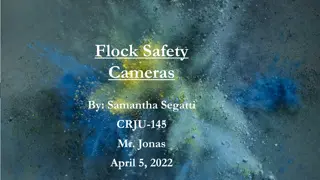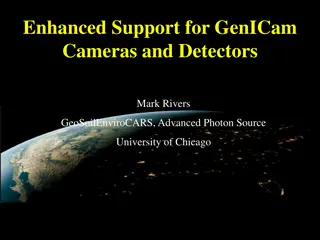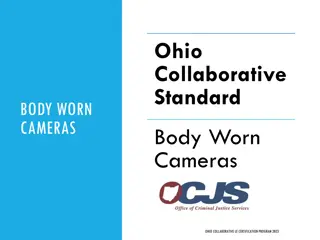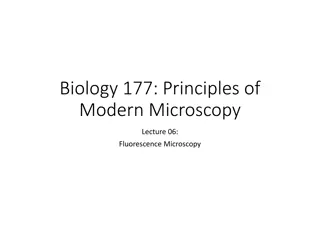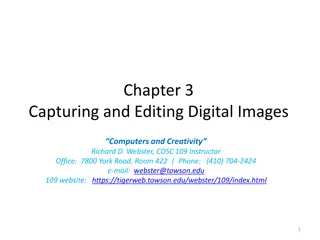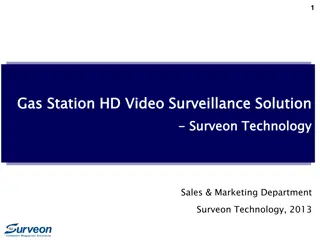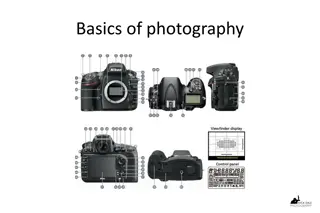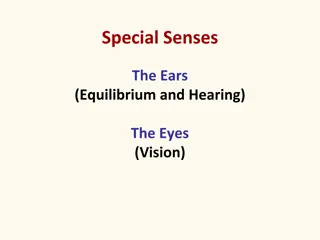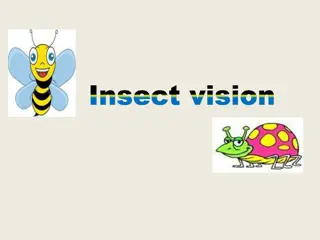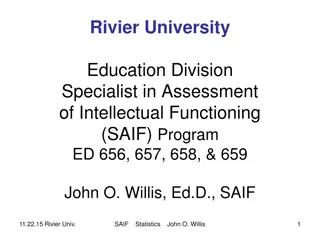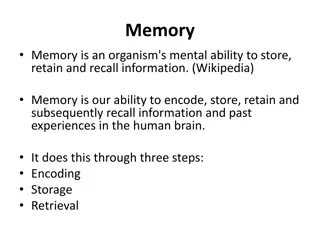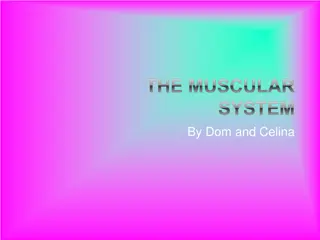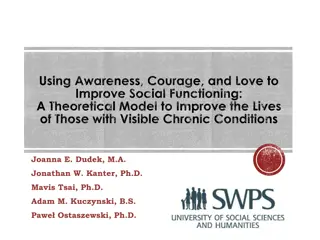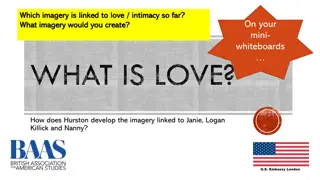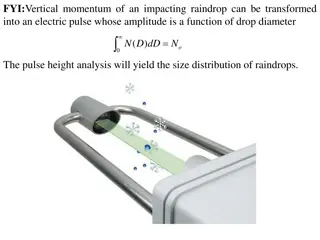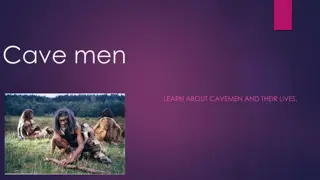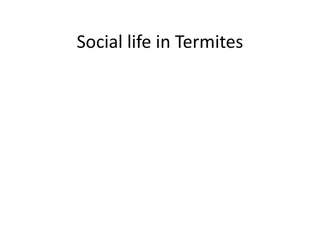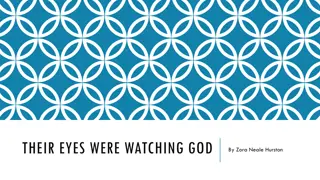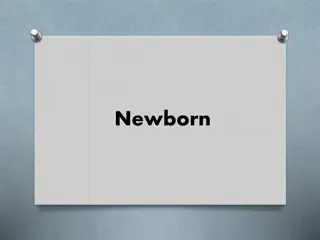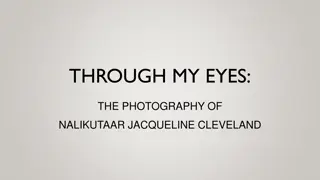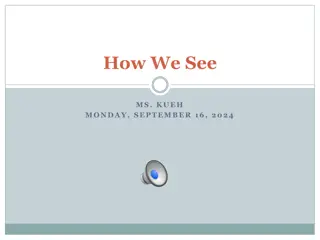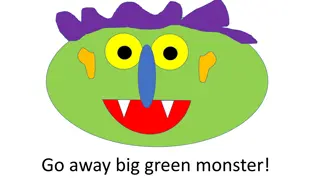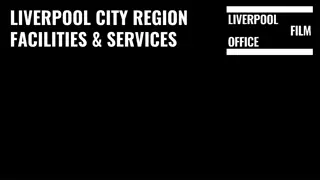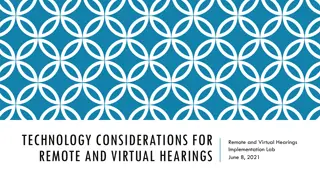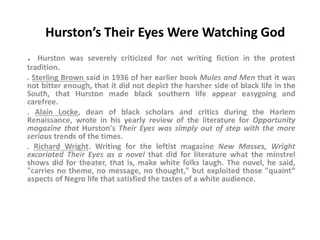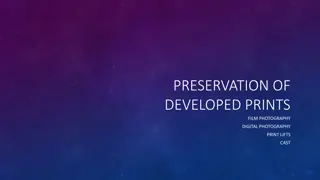Fascinating Insights into the Functioning of Eyes and Cameras
Explore the intriguing similarities between the working mechanisms of human eyes and cameras. From capturing images to processing them, discover how our eyes serve as the ultimate biological cameras, sending visual information to the brain for interpretation. Delve into the intricate components of the eye, such as the cornea, iris, retina, and optic nerve, and learn how they work together to create the visual experiences we encounter every day.
Download Presentation

Please find below an Image/Link to download the presentation.
The content on the website is provided AS IS for your information and personal use only. It may not be sold, licensed, or shared on other websites without obtaining consent from the author. Download presentation by click this link. If you encounter any issues during the download, it is possible that the publisher has removed the file from their server.
E N D
Presentation Transcript
Your eyes are like a wonderful kind of camera. They take pictures of the world around you and send the pictures to your brain. Your brain works out what your eyes are seeing. This happens from the moment that you open your eyes in the morning to when you close your eyes at night.
How a camera works The light rays from an object pass through the lens of the camera and get recorded on a film or a computer chip. Do you notice something about this drawing? Yes, the picture that is recorded by the camera is upside down (of course, when you look at the picture as a printed photo or on a computer screen, it is not upside down.)
How your eyes work Your eye works in a similar way to a camera - light passes through the lens of your eye and is 'recorded' on the back of your eye (the retina).
Do you notice something about this drawing? Yes, the picture that your eye takes is upside down too!
Why don't you see things upside down? Well, your eye sends the picture to your brain, and your brain turns the picture the right way up and tells you what you are looking at. So you see things the right way up.
The Eye Cornea This is the see-through skin that covers the front of your eye. It is clear like glass and it has no blood vessels in it. Sclera This is the tough skin which covers the outside of the eyeball (except for the see-through cornea). We call it the 'white' of the eye. Iris The iris controls the amount of light that enters the eye. The iris is the coloured part of your eye. Pupil This is the hole in the coloured iris. It lets light into your eye. It gets very small in bright light, and bigger in dull light. The lens The lens focuses light onto the retina. It changes shape to make sure that the 'picture' on the retina is as clear as possible. Retina This is like a movie screen which shows the picture you are seeing - upside down, remember? The retina has two lots of cells called 'rods' and 'cones' (because that is what they look like.) Rods can 'see' black and white. Cones can 'see' colours. They turn the picture into an electrical message for the brain. Optic nerve The electrical messages from the retina travel along the optic nerve to your brain. It's a bit like the cable that carries all the TV pictures from your aerial to your TV so that you can see the programs. The great thing is that our eyes take these 'movies' all the time and we don't need any film or camera.
Eyelids and Eyelashes These protect your eyes. The eyelids can shut out light so that you can sleep. They will shut very fast if they feel something that is trying to get into your eye. Eyelashes Eyelashes are very sensitive, and if they feel dust coming they trap it as your eyelids close. Eyebrows Eyebrows also help to keep dust and sweat out of your eyes.
Tear glands These are small glands inside your upper eye lid. Their job is to make tears to keep the surface of your eyeball clean and moist, and help protect your eye from damage. When you blink, your eyelids spread the tears over the surface of the eye. Small things that are on your eye (like specks of dust) wash into the corner of your eye next to your nose. Sometimes tears flow over your lower eyelid (when you cry, or you have hay fever), but mostly the tears flow down a tiny tube at the edge of your lower eyelid, next to your nose. (If you look very carefully you can see a tiny dot that is the beginning of that tube). This tube carries the tears to the back of your nose (and this is why your nose 'runs' when you cry!)
Eyes are really amazing. We need to look after them very carefully, because they are so important. Shading your eyes under a wide-brimmed hat and wearing sunglasses will protect your eyes from the sun, especially in summer.


